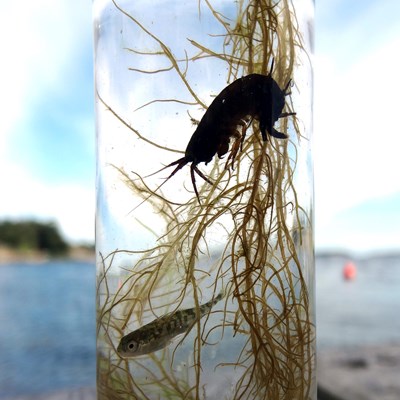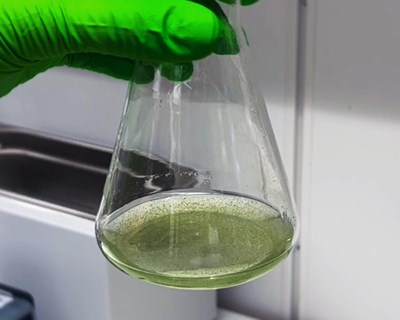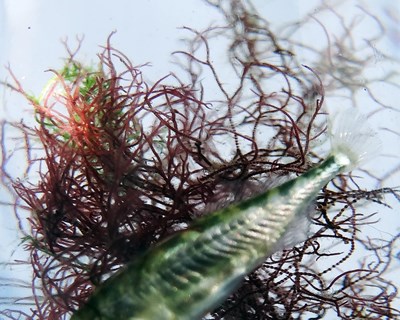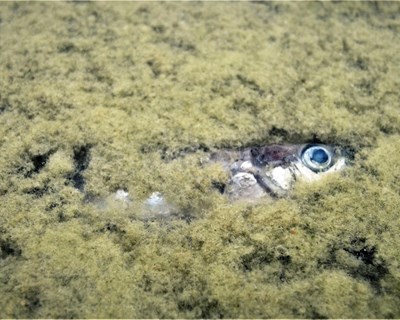Knowledge Center on Algal Toxins
We are building knowledge about algal toxins in Swedish waters to contribute to good water quality.

What are Algal Toxins?
Algal toxins are dangerous chemicals created by both micro and macro algae during their life cycles. These toxins are released from the cells and spread into the water, causing serious problems. The production of algal toxins varies in strength and location, which is linked to the intensity and location of algal blooms.
Usually the production of algal toxins peaks during the summer, but some toxins can also be produced when the water is cold. These toxins can harm both fish and people living in or near the water.
Algal blooms are often the result of an excess of nutrients, such as nitrogen or phosphorus from fertilisers or other sources, which leads to excessive growth of algae and affects the whole ecosystem.

Cyanobacteria
When we talk about algal blooms in summer, we often refer to cyanobacteria, as they create thick mats of tiny cells. These tiny organisms sometimes produce different types of toxins that can be harmful to humans, animals, and possibly plants. We know of several different types of toxins produced by cyanobacteria, but there are gaps in our knowledge because not enough comparative material is available yet.
In the Baltic Sea, three groups of filamentous cyanobacteria dominate: Aphanizomenon spp, Dolichospermum spp, and Nodularia spumigena. For the first group, Aphanizomenon spp. there is no evidence that it produces toxins in the Baltic Sea - but in other environments. Dolichospermum spp. can produce several different types of toxins with great variation between environments and environmental parameters. Nodularia spumigena produces high levels of the toxin nodularin in the Baltic Sea. Among the species that can produce toxins in lakes, Microcystis and Planktothrix predominate, which mainly produce various microcystins that interfere with both swimming and drinking water production.

Red and brown algae
Filamentous algae can also produce biotoxins. The brackish waters of the Baltic Sea contain the element bromine, from which fine-grained red and brown algae can produce toxic substances such as polybrominated diphenyl ethers (OH-PBDEs), polybrominated phenols (BPs) and polybrominated dibenzo-p-dioxins and polybrominated dibenzofurans (PBDD/Fs). These substances are also produced industrially as flame retardants. The algae Ceramium tenuicorne and Pilayella littoralis are known producers of brominated algal toxins. The toxins OH-PBDEs and BPs can be found in all parts of the Baltic Sea food web, in cyanobacteria and algae, crustaceans, mussels, fish, seals, and birds.

Other toxin-producing species
In the Baltic Sea and on the west coast, diatoms and microscopic organisms such as dinoflagellates produce toxins and can cause various forms of poisoning. In recent years, the dinoflagellate Alexandrium ostenfeldii has increased in the Baltic Sea. It can cause paralytic shellfish poisoning syndrome (PSPs), as it can produce neurotoxins such as gonya toxin and saxitoxin. PSP is caused by the ability of saxitoxins to block nerve impulses and can be fatal when it causes respiratory failure. PSP toxins are found in several parts of the Baltic Sea food web, in filter feeders, crustaceans and fish with levels varying over the summer season. Dinoflagellates can produce diarrhoea toxins, such as okadaic acid, which is considered to be a particular problem when consuming mussels. The Finnish Food Authority monitors commercially farmed mussels and oysters for paralytic shellfish poisoning (PSP) and diarretic shellfish poisoning (DSP), but not currently for cyanotoxin.